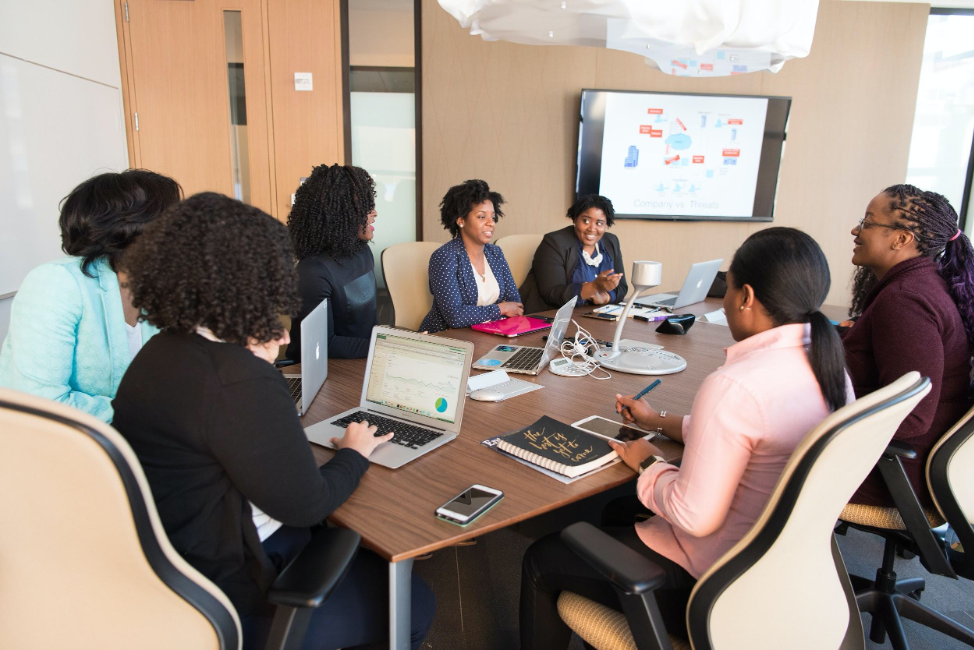7 Tips for Making Workplace Collaboration a Positive Experience

Collaboration in the workplace is a necessity for any successful business. Find out seven effective ways to ensure working with your colleagues is both productive and enjoyable.
Workplace collaboration should be a positive experience for everyone involved. But far too often, collaborative methods aren’t prioritized, or are haphazardly implemented.
In this article, we look at seven of the best ways to make collaboration within your teams and the entire company a rewarding experience, including:
- Transparency in the Workplace
- Team Building Activities
- Mentorship Programs
- Regular Brainstorming Sessions
- Weekly Video Conferencing
- Team Collaboration Tools
- Feedback Sessions
Read on to learn more about how these tips can help your team collaborate more effectively in the workplace.
The Top 7 Tips for Positive Collaboration at Work

TIP #1: Transparency in the Workplace
Transparency has become one of the core elements of great workplace collaboration, and it cannot be discounted.
Being open about the workings of a team, the company, and the expectations of each individual is a great way to create a collaborative atmosphere.
Create a flow chart to make the roles and assignments of your team clear — if people understand the structure of their team, they will feel more comfortable.
But beyond that, employees need to feel that they can come to their managers with any problems, questions, or ideas they may have.
Plus, everyone should feel that they can openly collaborate with their colleagues in the team, and even across departments, when the need arises.
Communication needs to be open and go both ways — that is the best way to create a collaborative workplace. Find out how a training and development program like Clear Communication can help your team become more effective communicators.
TIP #2: Team Building Activities
There are numerous team building activities that companies can offer to improve employees’ connections with each other, thus creating a more collaborative atmosphere.
Activities like white water rafting and golfing aren’t available to everyone, but the experience of learning and playing with your fellow colleagues creates great bonds between people. Many companies take individual teams, or sometimes all personnel, on outdoor excursions or to play sports.
Team activities are also a great way to get out of the office — while the office space itself is comforting in many ways, a change of scenery helps the mind grow. This is especially true if you have remote or distributed employees. For more insight on this topic, check out 3 Virtual Team Building Tips for Keeping Remote Employees Engaged.
Alex Birkett, Sr. Growth Marketer at HubSpot and co-founder of Omniscient Digital, puts it like this:
“At HubSpot, I make sure to get in-person team building time at least once a quarter. At Omniscient, we make sure to do two to three ‘retreats’ per year that are a combination of strategy planning and recreation/team building activities.”
It is also a good way to see how employees react to different situations, and can give you a great deal of insight into people that would otherwise have been missed.
More than anything else, team building activities will help people become closer to each other and will make workplace collaboration a more seamless and fruitful exercise.
TIP #3: Mentorship Programs
Mentoring is another excellent way to form strong bonds between employees, managers, and even senior executives.
Within each team, and each strata of the organizational chart, people have particular kinds of skills that make them invaluable to the company.
But many of these team members wish to improve their skills beyond what they currently have. One way to do that is to have colleagues mentor each other.
You could also have senior staff take an employee under their wing, showing them the ropes in a particular field.
While employees are generally hired for particular roles within an organization, people tend to have skills beyond their designations.
These skills can be utilized by the company, but they can also be shared with others in the business, thus expanding your talent pool.
Setting up mentorship programs can have huge long-term benefits for your company and improve the collaborative atmosphere in the workplace.
TIP #4: Regular Brainstorming Sessions
As we have mentioned, employees within an organization have diverse sets of skills, which should be utilized by the company.
To do this, and to foster collaboration in the workplace, consider holding regular brainstorming sessions.
These sessions are a great place to encourage new ways of thinking, thus generating new ideas that can benefit the team and the business.
And even if all the ideas from the sessions aren’t used, it is worth taking note of them for future use or development.
Brainstorming sessions shouldn’t be one-off events, however. Schedule them on a regular basis — monthly or quarterly — so people can build a bank of ideas to share at the session.
The reason why brainstorming works so well is because it brings people together for a singular purpose — to make each other think and generate more ideas.
This helps facilitate positive workplace collaboration on an ongoing basis.
TIP #5: Weekly Video Conferencing
There is so much technology available to businesses right now and they should be used to ensure employees feel connected with each other and their managers.
One kind of software that is necessary for positive collaborations is video conferencing — there are excellent and inexpensive video conferencing tools now available to businesses, such as Zoom and GoToMeeting.
But why have we singled out video conferencing over regular in-house meetings? Because of the rise of remote workers.
Businesses, both small and large, are beginning to employ large numbers of remote workers — to save on overheads and to tap into talent that may be located internationally.
Facilitating positive collaborations between in-house teams and remote workers can be challenging if you rely entirely on face-to-face meetings.
Instead, holding weekly video conferences with your employees will allow people to ‘meet’ each other and make them more comfortable with collaborating.
TIP #6: Team Collaboration Tools
In the same vein as video conferencing, there are a number of other tools that businesses can use to ensure workplace collaboration is a positive on-going experience.
There are numerous team collaboration tools like Slack and Trello that make it possible to communicate with team members even if they are located in different time zones.
The reason why such tools are becoming popular is because they encourage two-way communication, which we have already mentioned is extremely important.
Being able to reach the people you want to when you need them, and knowing that you will get a timely response is necessary for the smooth functioning of an organization.
And when workers know that they will be able to communicate smoothly with each other and their managers, they will find collaborating a much more positive experience.
TIP #7: Feedback Sessions
There is another form of two-way communication that is very important in making collaborative environments a success — feedback.
Giving and receiving feedback is one of the top ways of improving employee engagement — and it is also one of the most difficult to implement. Read Employee Engagement Survey Questions, Template, and Tips for more insight on the topic.
Businesses have long had a history of looking at feedback sessions as a one-way mirror—managers and executives give feedback to their subordinates and that’s it.
But that method does not work — far too many senior staff members have disguised their bullying tactics as a method of sharing feedback, or ‘tough love.’
Even when there is no malicious intent, simply receiving feedback on one’s work, performance, behavior, or attitude, does little to help a person — why have they done well or badly?
It is important for feedback sessions to go both ways — senior staff can share their thoughts with employees, but they also need to be open to receiving criticism or praise from the employees. This method will require a change of mindset for businesses, but it is an effective approach and will foster a sense of camaraderie in the workplace, thus encouraging collaboration.
The above tips for making workplace collaboration a positive experience for everyone involved will take time to implement. But once these systems are put in place, you will see a much better atmosphere in the workplace, one that helps people collaborate and communicate, which will have a positive outcome on the business in the long run.
Author Bio:

Ronita Mohan is a content marketer at Venngage, an infographic and design platform. She enjoys writing about digital marketing, sharing productivity tips, examining pop culture, and championing the need for representation.
Learn More About Team Building for Your Group
For more information about how team building can benefit your group, reach out to our Employee Engagement Consultants.




Comments